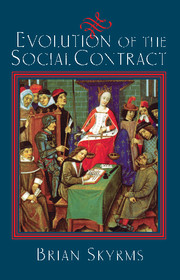2 - Commitment
Published online by Cambridge University Press: 05 June 2012
Summary
MODULAR RATIONALITY
In Stanley Kubrick's 1963 film, Dr. Strangelove, or How I Learned to Stop Worrying and Love the Bomb, the USSR has built a doomsday machine – a device that, when triggered by an enemy attack or when tampered with in any way, will set off a nuclear explosion potent enough to destroy all human life. The doomsday machine is designed to be set off by tampering, not to guard it from the enemy but to guard it from its builders having second thoughts. For surely if there were an attack, it would be better for the USSR to suffer the effects of the attack than to suffer the combined effects of the attack and the doomsday machine. After an attack, if they could, they would disable the doomsday machine. And if their enemies could anticipate this, the doomsday machine would lose its power to deter aggression. For this reason, the commitment to retaliate had been built into the doomsday machine. Deterrence requires that all this be known. There is a memorable scene in the film in which Peter Sellers as Dr. Strangelove shouts over the hotline: “You fools! A doomsday machine isn't any good if you don't tell anyone you have it!”
Hollywood is not that far from Santa Monica, where cold war strategies were analyzed at the RAND Corporation.
- Type
- Chapter
- Information
- Evolution of the Social Contract , pp. 22 - 44Publisher: Cambridge University PressPrint publication year: 1996



